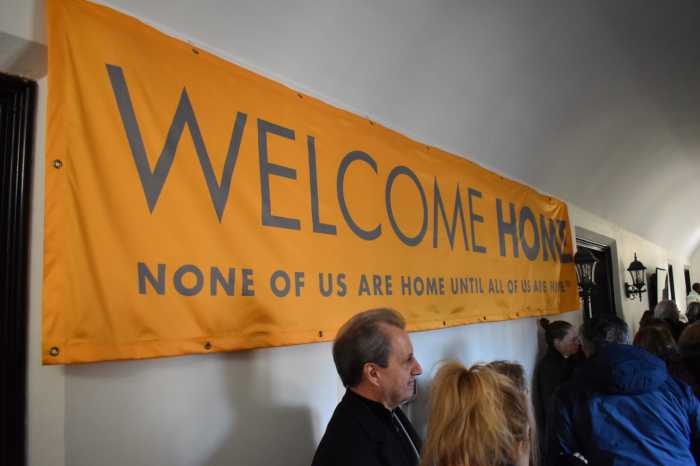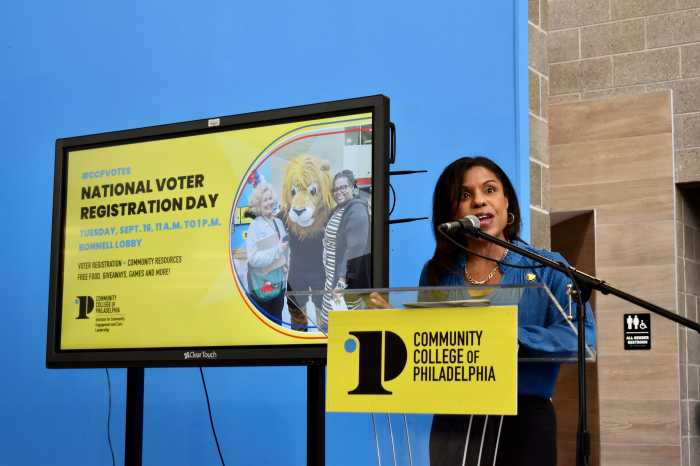Charities statewide have been experiencing “whiplash” in the first months of 2025, says Anne Gingerich, executive director of the Pennsylvania Association of Nonprofit Organizations.
President Donald Trump entered office with a flurry of executive orders, making sweeping attempts to halt federal funding and rein in groups dedicated to priorities his administration opposes. Some nonprofits have already lost financial aid, Gingerich said, while others are grappling with the Trump administration’s opposition toward diversity, equity and inclusion programs.

But many existential questions for nonprofit groups remain unresolved as legal challenges to the president’s decrees make their way through the courts system.
Gingerich said Pennsylvania‘s charitable organizations — which she said number roughly 49,000 — are mustering their resources to weather this unstable period while still remaining dedicated to their core objectives.
The following interview with Gingerich has been edited for length and clarity.
What have last few months been like for Pennsylvania‘s nonprofit sector?
President Trump (has) signed 151 executive orders in 2025. I think that was the number I pulled on May 19. So when you have so many executive orders coming down, it’s whiplash for people to keep up with what’s happening.
There’s a number of executive orders that target diversity, equity and inclusion. And a lot of where that is showing up in the nonprofit space is on funding that has been either temporarily or permanently blocked for organizations … that have named DEI in their language somewhere or when there’s a program that is specifically focused in the diversity, equity and inclusion efforts.
Organizations are trying to figure out, do we continue to use that language because it’s so core to our mission? Or do we choose not to and instead simply — I put that in quotes, “simply” — make sure that the work continues to get done?
It is a governance issue that organizations are wrestling with. … And wanting to make sure that they continue to stay true to their mission and to their core values. I see organizations leaning into their core values more and more every day.
The second set of executive orders has to do with all of the changes that have occurred and then been withdrawn and rescinded on federal government agencies. This really has to do with funding freezes that are threatened. And then sometimes the funding is released. And then it’s stopped, and then it’s released, and it’s really hard for nonprofits to know how to operate in that context.
There was a provision in one of the original drafts of the House (“big, beautiful bill”) that … would have given the executive branch carte blanche to identify certain nonprofits as (terrorist supporting) organizations without due process. And the national nonprofit community stood up and said, no, that’s not OK.
There’s been a couple of attempts to strip certain nonprofits of tax-exempt status. … And then all of the AmeriCorps staff was put on an administrative leave. … Many nonprofits in Pennsylvania use AmeriCorps staff to help make sure that their missions are fulfilled.
So it just undercuts all the different pieces of what we try to do.

How are nonprofits trying to plan for the future right now when they’re not sure when or how some of these issues will resolve?
There’s been a nice bit of training on scenario planning for nonprofits. I think with scenario planning, it can be a two-edged sword. Because on the one hand, you want to plan for the worst possible scenario. But when you don’t know what all those scenarios might be, it’s hard to actually do scenario planning.
I know some organizations have looked at their funding sources and have said, well, this funding right here is secure for us at the moment. So if this other funding goes away, this is what that scenario might look like.
Other organizations have already started talking about merging with or partnering with other organizations to make sure that the services continue in one way or another. … It’s hard to pivot when you don’t know what the pivot might be, and then tomorrow, you might be pivoting back anyway.
Have you seen a loss of services, with nonprofits having to close their doors or drop certain programs?
We housed a survey for some funders in the greater Philly area. … The great thing about this survey is that it had over 600 responses (from nonprofits), so the data that came out of it is fairly strong.
Here’s a question that was asked: How have the federal funding freezes or new policies impacted your organization so far? The answers have ranged in everything from delayed reimbursement for existing grants or contracts (24% responded that way), paused or canceled new initiatives (30%), staffing challenges (18%), increased demand for services with fewer resources (32%), increased stress or decreased staff morale (56%), and increased financial strain (32%). So that just gives you a sense of what funding freezes do.
Are there particular categories of nonprofits that have actually seen the money turned off at this point?
The category of nonprofits that has seen the funding turned off completely are those serving immigrant populations. And I’m not saying all of them. I’m just saying that I know some of them, for sure. That funding is not there. And that happened pretty fast.
For some in the current administration, there’s been a view that many nonprofits are pushing ideologies.
Do you worry that the work of nonprofits has been politicized?
One of the beauties of the 501(c)(3) space is that we’re actually not allowed to be partisan. So we are one of the few places — maybe the only actual structure in American society — that is considered nonpartisan. Does that mean there are actors that don’t behave appropriately? Sure, as there are in every system.

But in general, the nonprofit community is very supportive of a nonpartisan space. … Because we know it’s one of the only places that people from all parties and persuasions can come together and solve an issue like food insecurity. You don’t have to be Republican or Democrat to care about those that are hungry next door to you.
For people who want to support the health of nonprofits, especially in their local communities, how can they find where the needs are?
There are often volunteer centers in local communities, so people can donate to the organizations of their liking. … One of the places to look for human service organizations that you might want to support is PA 211. … It’s like 911, but for social services. … So, if you look for a particular cause that you want to support on (PA211.org), you would be able to find a local nonprofits that you might want to support via donation.
This article originally appeared on Erie Times-News / USA TODAY Network via Reuters Connect




























